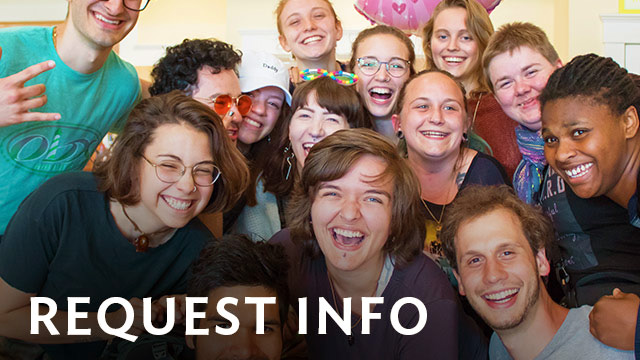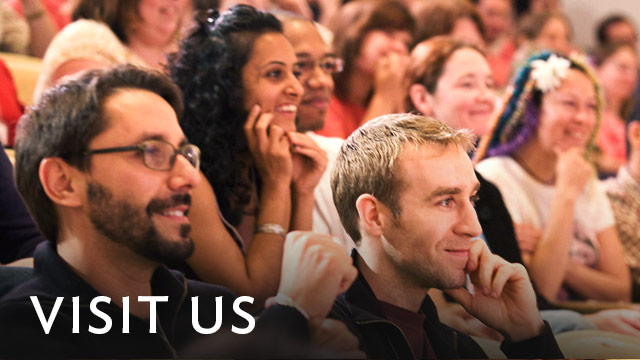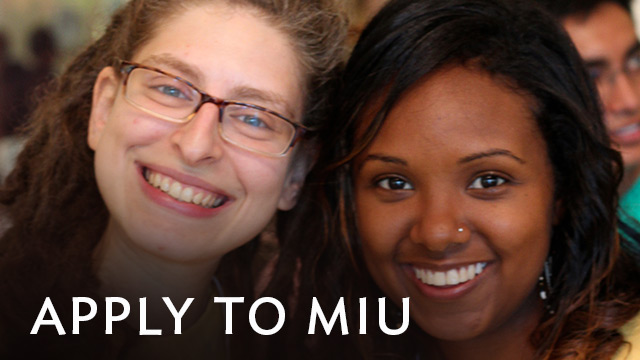- FA 205 Language of Visual Organization
This course explores the theory and practical application of some of the deeper organizing principles that are foundational and universal to both the fine and applied arts. Topics include: examining and applying design principles and vocabulary such as figure/ground, interdependence, symmetry, rhythm, shape, and texture; understanding how these principles and their components apply to the scope of the visual arts, including drawing, sculpture, ceramics, photography, graphic design, architecture, fabric design, and landscaping; and understanding and expressing how design principles can be correlated to the balance and order of nature, the universe, individual and societal life.
- FA 217 Drawing 1
In this course, students develop powers of observation and imagination, abilities that are vital for all the arts. Students focus on establishing the use of principles of drawing through observational methods. Topics include: still life, figure drawing, interior and landscape. Art majors take drawing courses as they advance through the curriculum. May be repeated for credit with permission of the instructor, subject to satisfactory progress in the previous course and a clear plan for the progression of learning in the subsequent course.
- FA 218 Painting 1
Painting expresses the artist’s connection with the deep laws fundamental to seeing and creating visual images. Students are immersed in the fundamentals of drawing and painting from nature and a variety of other subject matter. The curriculum addresses the students’ development of formal and technical skills along with a conceptual and critical understanding of the language of painting as preparation for independent studio work. May be repeated for credit with permission of the instructor, subject to satisfactory progress in the previous course and a clear plan for the progression of learning in the subsequent course.
- FA 381 Paleolithic Art through Art of the Middle Ages
To many, the term ‘Ancient art’ might suggest that which is, first and foremost, old and far removed from the contemporary concerns of today’s artist or art student. Such a perception would be inaccurate, however, for the so-called Ancient Cultures comprise those stages of societal development when Western Civilization was in its infancy and its burgeoning youth. The artistic legacy of these early cultures speaks to us today, communicating across time, on the fine level of feeling, in images that are startling in their freshness and purity, and reminding us of the timeless continuity of collective consciousness.
- FA 382 European Art from the Renaissance the Late 19th Century
Beginning in the latter half of 15th Century Europe, a profound synthesis of art, philosophy and culture took place within collective consciousness, which greatly affected the evolution of society and the images it produced for centuries to come. We will explore how this synthesis differentiated itself, under such burgeoning influences as Secularism, Humanism, and the Objective World view, to unfold a rich progression of artistic styles and attitudes. Styles include: Pre-, Early, High, and Northern Renaissance, Mannerism, Baroque, Rococo, Neoclassicism, Romanticism, French Naturalism, etc.
- FA 385 Modern to Contemporary Art
Beginning in the late 19th Century, and especially into the 20th Century, the ‘look’ of art changed so rapidly and radically that for many it seemed to defy all sense of connectedness to the traditions of art that preceded it. Has such change been the result of capricious discontinuity, or an understandable expression of the dynamics of collective consciousness and ever-changing cultural contexts? This course will examine the How and Why of Modern Art up to the 21st Century. Although drawing appropriately on the fields of Philosophy, History, Art Theory, etc., and involving classroom discussions and critical writing assignments, this course, like other courses in this series, will be centered around extensive, purposeful visual focus. For those students already familiar with many of the forms of Modern Art, here is an opportunity to more deeply appreciate and understand those forms within the fuller context of their cultural and historical connectedness.
- FA 386 The Art of Non-Western Cultures
As rich and compelling a narrative the Art History of Western Civilization may be, the visual vocabulary of today’s artist or art student would be incomplete without a basic familiarity with the forms and images produced by societies whose respective world views differ uniquely from that of Western Culture. Alternate ways of perceiving and visually representing values like nature, the flow of time, the cosmos, and mankind’s role in it, further substantiate the universality and diversity of the expressive nature of consciousness. Moreover, this course offers an opportunity to explore new vistas of aesthetic possibilities and formal expression to any aspiring artist or student looking to expand their sources of creative inspiration. This course will serve as a foundational, visually oriented survey of image-making traditions from such areas of the world as Sub-Saharan Africa, Eastern Asia, India, Mesoamerica, and Oceania. An additional feature of the course will be the consideration of the many instances over time in which non-Western art has significantly influenced the course of Western art.
- FA 340 Ceramics Studio
- Topic 1: Hand-building in low-fire earthenware clay, drawing inspiration from ancient origins to contemporary masters
- Topic 2: Exploring the relationship between surface and form in thrown and hand-built forms using high-fire stoneware clay
- Topic 3: Addressing the image on hand-built, low-fire earthenware forms
- Topic 4: Exploring the limits of function in hand-built and thrown high-fire stoneware forms
Students at all levels in ceramics will increase their studio skills related to forming, understanding glazes and other surface possibilities, plus various firing methods. Faculty and peer interaction is structured to support the integration of method, meaning, and function (depending on the individual student’s need) to express the inner value of consciousness in matter in this medium. In some studios, wheel throwing opens a new dimension of experience for the student potter. The challenge to center and form a pot while the clay is spinning through the hands leads to a synchronicity that powerfully connects potter and pot, awareness and matter, in the process of creation. Students are exposed to the traditions and history of ceramics that continue to emerge worldwide.
- FA 352 Sculpture Studio
This course concerns itself with spatial and structural relationships in sculpture. Exploration in form, context and installation are addressed. Students learn to realize ideas in form with consideration of delivery through an understanding of the deeper organizing principles that underlie three-dimensional space. Methods include constructive, additive and subtractive processes involving various prescribed and found materials.
- FA 317 Drawing Studio
This course addresses experimental approaches to drawing. Through a structure that approaches drawing as a tool to respond to our physical environment, we will explore, expand, and develop or ‘redraw’ our personal perception. Expanding the definition of drawing in the context of contemporary art encourages the development of a personal visual vocabulary while becoming a platform for the exploration of materials and content. Using unconventional and imaginative resources to construct both 2-Dimensional and 3- 2020/21 57 Dimensional drawings, students will have open assignments that introduce various ways and material to develop a visual story. Students will have the opportunity to experiment with installation, wearable drawings, performance, and the body.
- FA 304 Painting Studio
Painting expresses the artist’s connection with the deep laws fundamental to seeing and creating visual images. Students are immersed in the fundamentals of drawing and painting from observation, with a focus on moving fluidly between painting outdoors in the landscape, and then applying ideas and observations gathered outdoors to studio-based paintings (and vice versa). The curriculum addresses the students’ development of formal and technical skills along with a conceptual and critical understanding of the language of painting, as well as the particular issues, philosophies, and history associated with landscape painting. May be repeated for credit with permission of the instructor, subject to satisfactory progress in the previous course and a clear plan for the progression of learning in the subsequent course.
- FA 414 Contemporary Art Criticism
Students learn to critically analyze, interpret, and contextualize art in terms of the history of art, art theory, and culture while studying some of the most significant writings by modern critics, theorists, and artists—responding to them through writing exercises and classroom discussion. Students apply skills and knowledge gained by formulating, refining, and completing a research essay that involves a modern artist or contemporary issue, as related to the larger context of philosophical ideas and consciousness.
- FA 483 Intermediate and Advanced Contemporary Studio
Advanced and intermediate level students work with a studio structure that allows them to go deeply into their work at the late middle and final stage of their degree requirements (generally senior year). This course is designed to forward studio work by capitalizing on students’ strengths through intensified pure studio time coupled with personal contact with faculty. During these months the student connects thinking with action in the artist’s statement and receives direct support for presentation, installation, and documentation of thesis work. The cost of materials will vary by student.
 As a student at MIU you’ll get in touch with your deepest self, the source of all creative inspiration, through daily practice of the Transcendental Meditation technique.
As a student at MIU you’ll get in touch with your deepest self, the source of all creative inspiration, through daily practice of the Transcendental Meditation technique. Our BFA program is perfect for students who want to go to graduate school in art or enter the art world.
Our BFA program is perfect for students who want to go to graduate school in art or enter the art world.

 Adriene Crimson is this program’s admissions counselor for US students. Adriene will provide you with all the details of becoming a student, including connecting you with the program director or faculty.
Adriene Crimson is this program’s admissions counselor for US students. Adriene will provide you with all the details of becoming a student, including connecting you with the program director or faculty. Our low student-faculty ratio means you’ll get the individual attention you need to find your own voice. You will interact with expert faculty/artists, peers, and a diverse group of prominent guest artists.
Our low student-faculty ratio means you’ll get the individual attention you need to find your own voice. You will interact with expert faculty/artists, peers, and a diverse group of prominent guest artists.



 This course is your entryway into MIU and Consciousness-Based Education. We dive into an ancient yet radically new framework for understanding the universe and our place in it. This model holds that consciousness, not matter, is fundamental. With this in mind, we look at some of life’s big questions: How can we develop our fullest potential as human beings? How do art and stories help us understand that potential? How can our own growth help create a more just and peaceful society? What do the world’s great wisdom traditions have in common? How can we improve education and healthcare? The new paradigm we explore in this course infuses all your classes at MIU. In this course, you'll learn the Transcendental Meditation® technique to awaken the full potential of consciousness in your life.
Comments from students
This course is your entryway into MIU and Consciousness-Based Education. We dive into an ancient yet radically new framework for understanding the universe and our place in it. This model holds that consciousness, not matter, is fundamental. With this in mind, we look at some of life’s big questions: How can we develop our fullest potential as human beings? How do art and stories help us understand that potential? How can our own growth help create a more just and peaceful society? What do the world’s great wisdom traditions have in common? How can we improve education and healthcare? The new paradigm we explore in this course infuses all your classes at MIU. In this course, you'll learn the Transcendental Meditation® technique to awaken the full potential of consciousness in your life.
Comments from students



